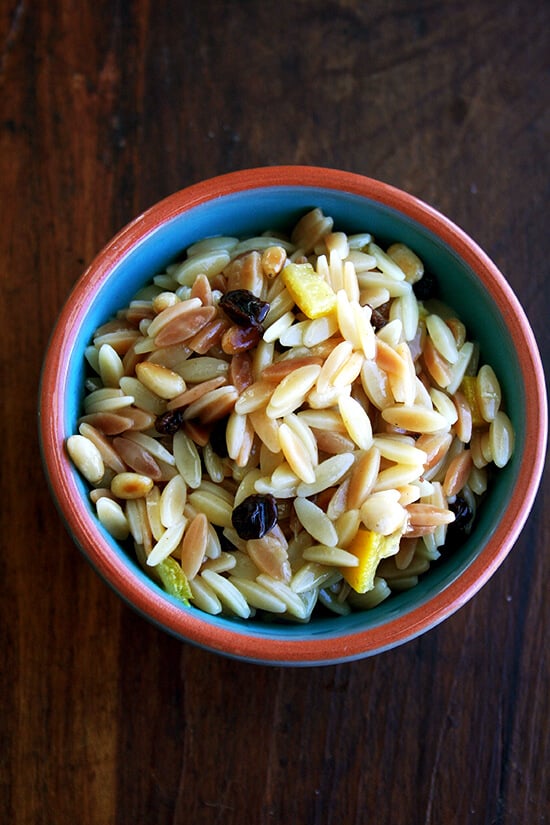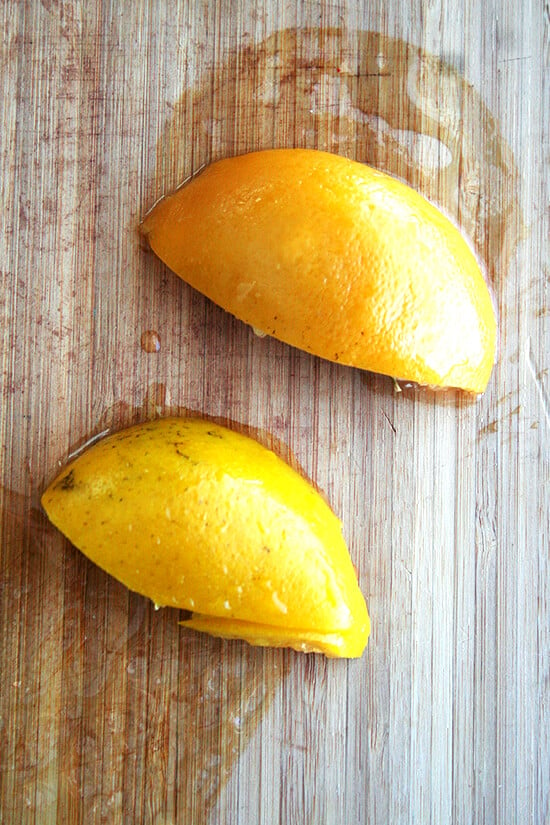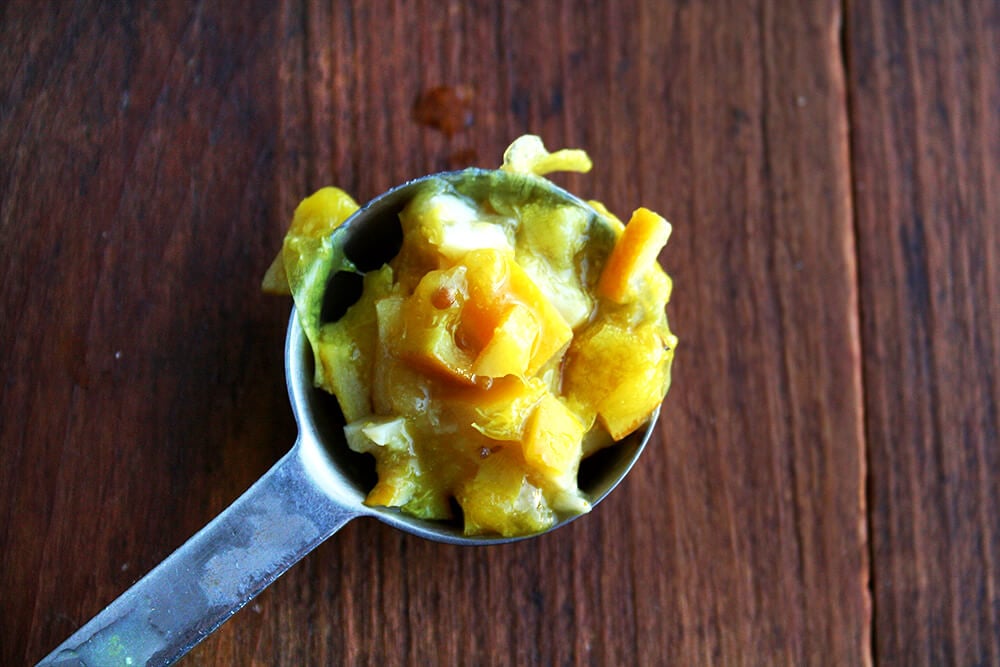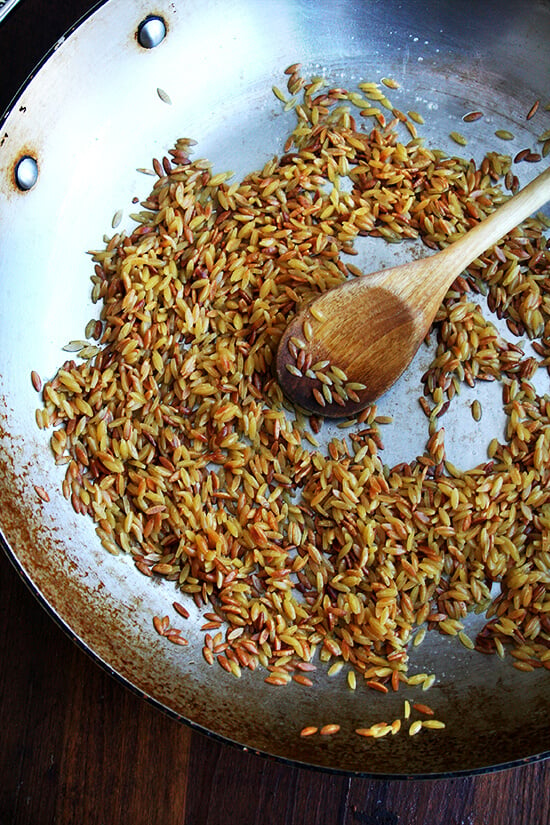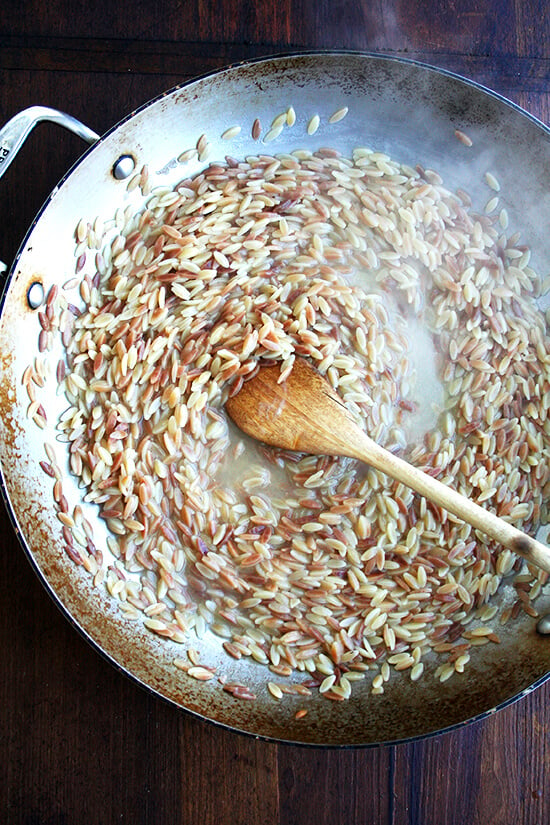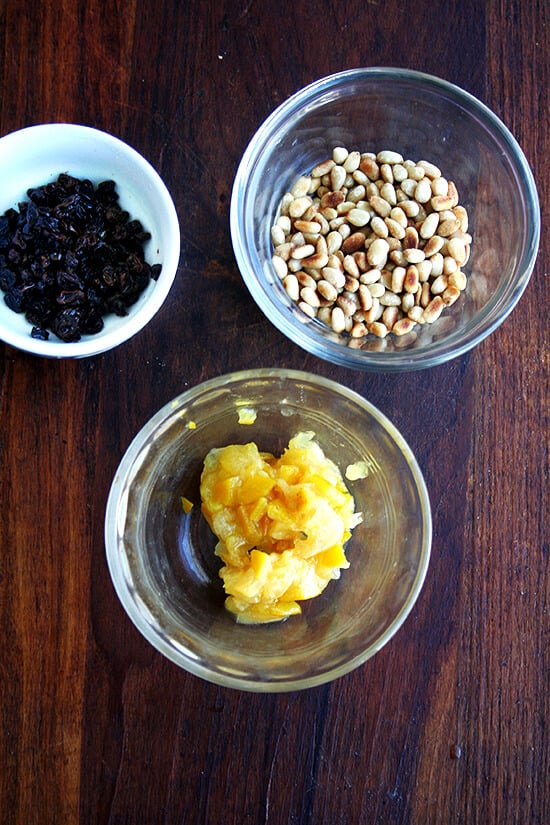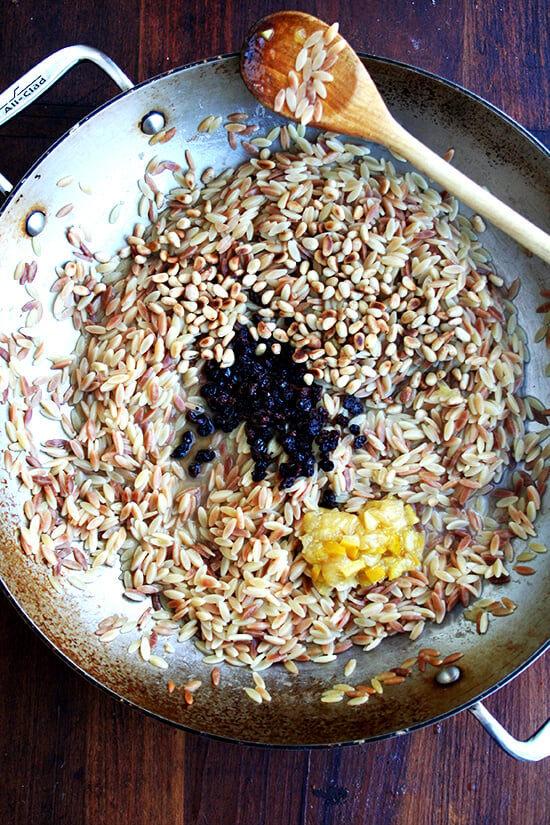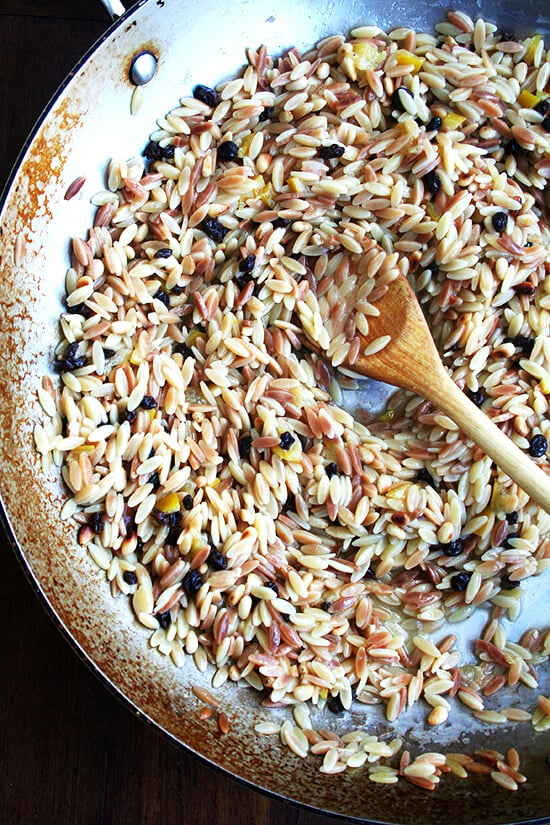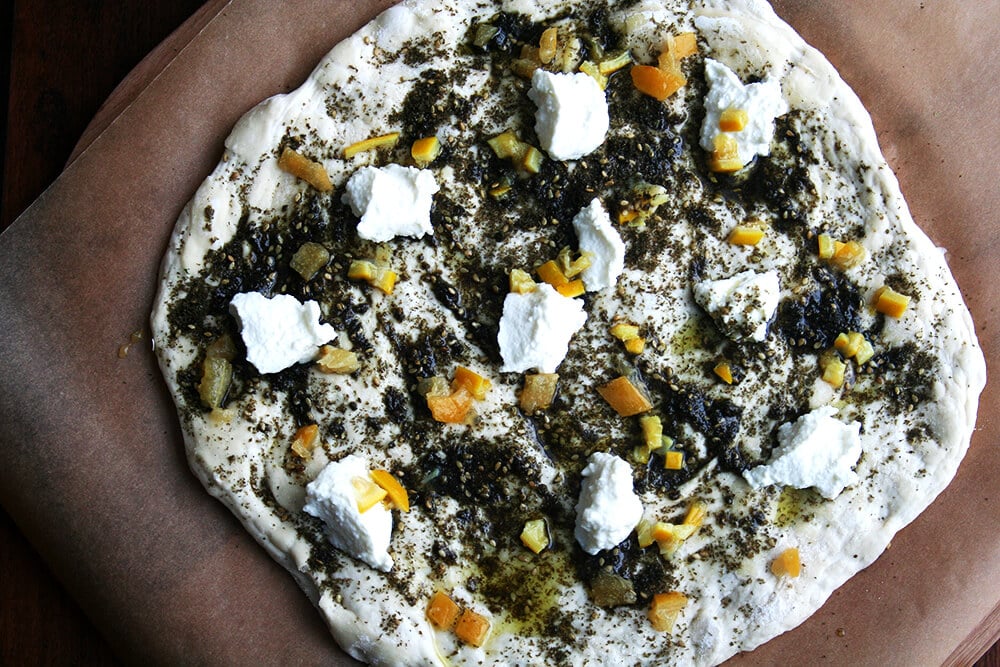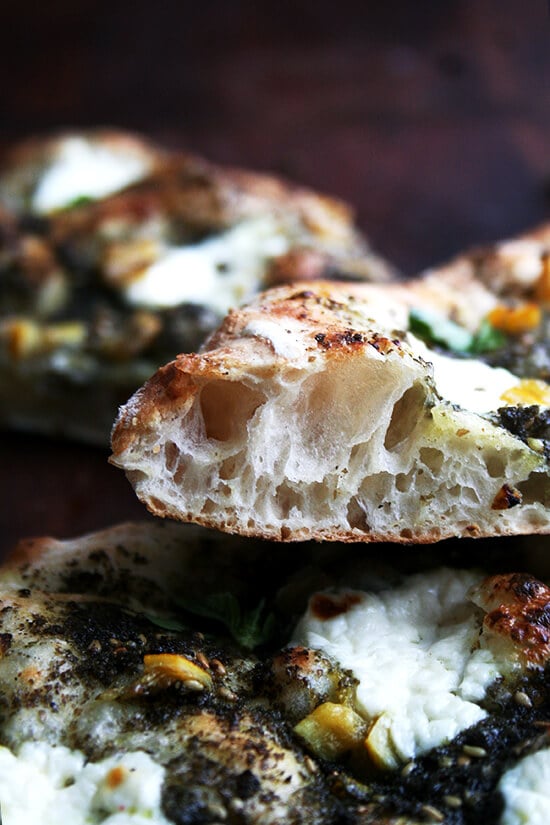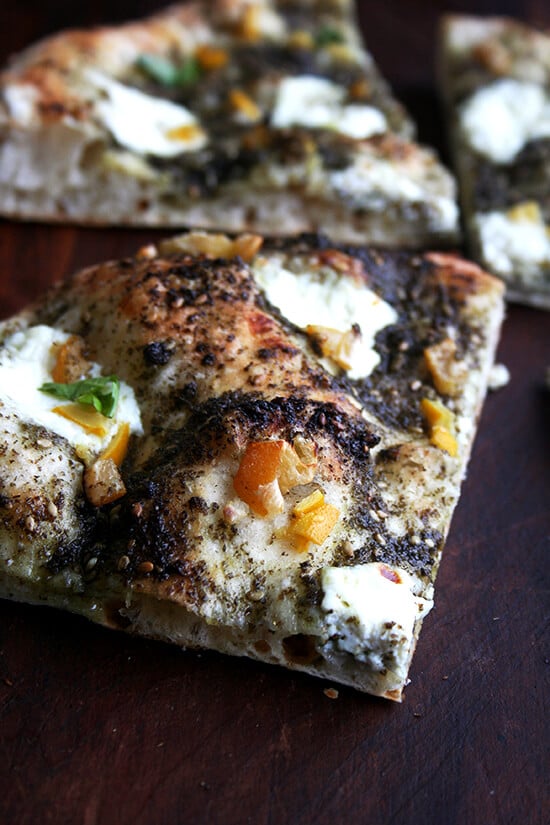When I first began experimenting with preserved lemons, this pizza came to mind, and then it materialized on the dinner table, the preserved lemons replacing the slices, everything else remaining the same. It has been awhile since I made Kesté’s original version, but the preserved lemons offer that same brightness and intensity, and the combination is one of my favorites. As I am learning, preserved lemons work nicely anywhere lemon and salt work nicely — so, everywhere? — and while there is something about the combination of smoked mozzarella and lemon that just can’t be beat, this is a fun pizza combination, too: za’atar with olive oil, fresh ricotta, preserved lemon and basil. The key when using preserved lemons is to adhere to the maxim less is more: a little preserved lemon goes a long way. I now understand why the two preserved lemon recipes I followed called for so few lemons, and that doubling each of those recipes, which seemed the obvious move at the time, may have been unnecessary. Quick follow-up to the preserved lemon post: As you might recall, I made two batches of preserved lemons, the first came from Jerusalem and called for a traditional process of scoring and salting the lemons, the preserving taking four weeks to complete. The second method came from Bon Appetit, took two weeks to complete, and called for boiling the lemons first, then submerging them in a brine made with sugar, salt, and spices. BA’s assertion that these lemons were “the best [they’ve] ever tasted” convinced me to make them, and while I had my doubts about the sugary brine, if ever I run out of preserved lemons, this will be the recipe I turn to. Much to my surprise, the BA lemons do not taste sweet at all — they taste salty but less salty than the Jerusalem lemons. In a side-by-side taste test, the winner was clear. What I also like about the BA lemons is the inclusion of turmeric, whose taste is indiscernible but whose color gives the lemons a more vibrant hue. In sum, the differences are subtle, and I can’t say I can detect a difference in taste in the finished dishes, but for what it’s worth, I’m a fan of the untraditional brine-preserved lemons. Chicken tagine with preserved lemons and green olives is still in the works, but in the meantime I have one other dish to share. Sally Schneider has a wonderful recipe for brown butter orzo “risotto”, which calls for toasting orzo in browned butter, adding water and gently simmering for eleven minutes. Without stock, wine, cream or cheese, the starch of the orzo binds with the water, melding into a creamy, risotto-like dish. Here I’ve added toasted pine nuts, preserved lemons, and plumped currants, and the combination is delectable. With or without preserved lemons, this orzo is one of my favorites. Finally, a big thank you to all who voted in the Food52–goop dark leafy greens recipe contest! I so appreciate your support. The top lemon is from the Jerusalem jar; the bottom lemon is from the BA jar: A Few Ideas for Using Those Preserved Lemons: To recap, preserved lemons can be used anywhere you would use lemon, lemon zest, and salt. Because they are salty, be sure to cut back on the salt in any recipe you decide to use them in. I have been storing mine at room temperature, but my house is freezing, so it seems safe. If your house is not terribly cool at the moment, it’s probably a good idea to store them in the fridge. When ready to use them, cut them up, rind, flesh and all. Here are a few ideas:
- Throw them on pizza. As I noted in the post, the combination of smoked mozzarella, lemon and basil, is irresistible, and you can substitute preserved lemons for the lemon slices in this recipe.
- Toss them in pasta or whole grain salads. Recipe for brown butter orzo “risotto” with toasted pine nuts and currants is below. I’ve made this same dish with Israeli couscous, which is also delicious, but there is something magical about orzo and its ability to make a creamy sauce.
- Make a condiment: Philip Krajeck of Rolf & Daughters, the chef credited to the brine-preserved lemons, suggests seeding whole preserved lemons, puréeing them with lemon juice and blending them with olive oil. He serves this condiment with grilled fish. Sounds delicious.
- Make a tagine with chicken, and green olives. Working on it. No reviews No reviews No reviews

